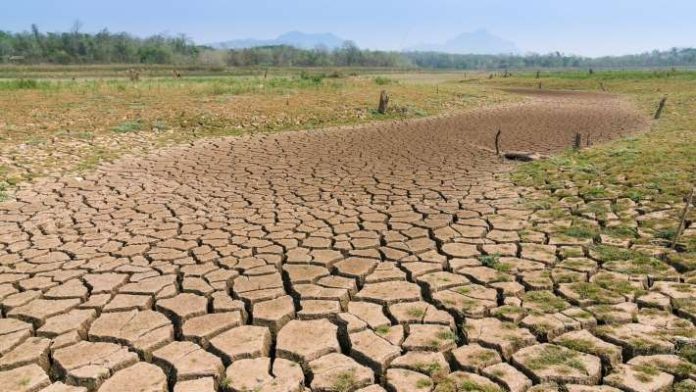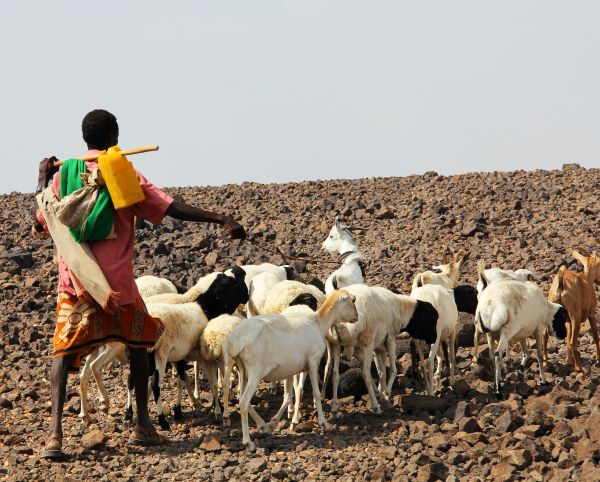By Lawrence Paganga
Drought has affected the start of the agriculture season and poses a risk to food security across Malawi as the rain recorded are below those received since 2015.
According to the Famine Early Warning Food Security (FEWS NET) latest report on food security update, the poor rainfall has forced the country to revise its forecast for 2022 below-average harvest.
“In Malawi, ongoing drought conditions and record low rainfall totals exist across most areas, particularly the Central and Northern regions. This differs significantly from the average to above-average rainfall assumption in the October 2021 Food Security Outlook and previous global, regional, and national weather forecasts for the 2021/22 rainfall season,” FEWS NET said.
It added: “Preliminary total rainfall is the lowest on record in several areas and substantially below similar periods in 2015, the most recent widespread below-average rainfall season.
“Based on revised weather forecast models and the very poor start of the 2020/21 rainfall, the 2020/21 rainfall season is expected to be below average.
“The revised forecast indicates poor rainfall is expected to continue, likely resulting in a below-average 2022 harvest. As a result of the loss of some agricultural labour opportunities and slight increases in food prices, some very poor households across the country will be stressed or in crisis.
“At the area-level, though, food security outcomes will not shift significantly during the projection period and will remain Minimal across most of the country.
“The poor season signals that food security is likely to deteriorate in mid and late-2022 – outside of the current projection period – the time at which the impacts of the current below-average season will more notably affect poor households’ food and income sources.”
In Malawi, ongoing drought conditions and record low rainfall exist in most areas, particularly the Central and Northern regions. However, two preceding years of above-average production is likely mitigating against an immediate deterioration in food security outcomes.
“There are record rainfall deficits across nearly all of Malawi. Both the standard precipitation index and rainfall totals reflect ongoing drought conditions in critical agricultural areas.
“Preliminary total rainfall is the lowest on record, at around 122 mm and 105 mm on average, respectively. In the northern part, total rainfall to date is approximately 60% below the long-term mean and 40% below the 2015-16 totals by the end of December, when below-average rainfall had a significant impact on food security.
“In the central region, total rainfall is approximately 55% below and 46% below 2015-16 totals. Based on FEWS NET’s analysis, most livelihood zones in Malawi are currently experiencing moderate to severe dryness, with six livelihood zones recording extreme dryness.”
Currently, areas in southern Malawi, while facing late start and below-average rainfall, have received relatively better rainfall performance from the beginning of the season.
In most livelihood zones, field reports indicate the current agricultural labour has reduced slightly but is mostly in line with seasonal trends.
“As a result, ongoing agricultural labour opportunities and low staple food prices are mitigating against a deterioration in food security outcomes for very poor and poor households in drought-affected areas.
“The government’s introduction of Covid-19 containment measures in early 2020 had negative microeconomic implications on the employment and business environment in urban areas, negatively affecting food security among poorer urban households.
“However, the negative economic impacts from current policies to mitigate the spread of Covid-19 are likely to be mild compared to the onset in 2020, as most businesses and workplaces have adapted to continue operating within the restricted environment.
“Current food security outcomes overall, despite an exceptionally poor start to the rainfall season, food security conditions in most of Malawi remain favorable. This is driven by two consecutive preceding above-average harvests, continued labour opportunities, and below-average food prices”.
According to FEWS NET, as a result, the impact of the drought in the immediate term remains minimal for most households, although some very poor households may experience a reduction in income and reduced food access.
“However, crisis outcomes are expected in the Lower Shire Livelihood Zone districts of Nsanje and Chikwawa, where production in the preceding season was below average and households are atypically reliant on markets but unable to afford all food needs.
“Near-term rainfall forecast up to early January indicates that 14 livelihood zones are likely to experience their driest season on record (through mid January), particularly in central and northern regions.
“And December to February precipitation performance probability calls for a 75 to 90% probability of below-average rainfall over northern Malawi.
“Based on the significant rainfall deficits to date and forecast for below-average rainfall for the remainder of the season, below average 2022 crop production is expected.
“Based on ongoing rainfall performance, revised forecast, and expected below-average harvest, FEWS NET expects that agricultural labor opportunities will be atypically low at the peak of the agricultural laboUr season, in January, and will remain low through the projection period.
“The reduction in agricultural labor opportunities will likely have the highest impact on very poor and poor households, which depend heavily on labour for in-kind or income to purchase food in markets from January to March.









